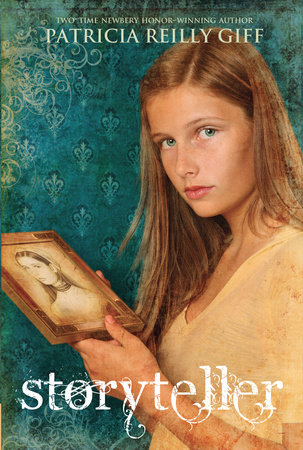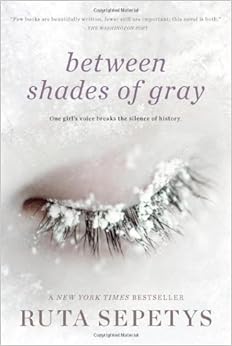Elijah of Buxton
by Christopher Paul Curtis
Image from: http://www.scholastic.com/content/media/products/43/9780439023443_xlg.jpg
Bibliography:
Curtis, Christopher Elijah of
Buxton. New York: Random House. 2008. ISBN 9780739364154
Plot Summary:
Eleven-year-old
Elijah is proud to be the first free-born child in his family, living in a
settlement of runaway slaves in Buxton, Canada West. He has never seen the
horrific ways that slaves are treated in America; however, he has seen them as
they enter the settlement, hungry and tired. Elijah risks his own freedom when
he embarks on a journey to America, determined to right a wrong. He is in
search of a friend’s stolen money that was being saved to free family members.
What Elijah brings back is more than he expected.
Critical Analysis:
Christopher Paul Curtis sets the stage for this novel with
these opening lines, as
young Elijah describes his possible activities for the evening, saying, "It was Sunday after
church and my chores were all done. I was sitting on the stoop of our home
trying to think what to do. It was that time of day when the birds were getting
ready to quiet down and the toady-frogs were starting to get louder with that
chirpity sound they make most the night. I wondered if it would be worth it to
go fishing for a hour afore it got dark.” The author continues this use
of narration by the characters to define the setting, rather than the use of
vivid descriptions. We find out, for example, that the main setting is Buxton,
when Frederick Douglas, an important character that adds authenticity to the
story, appears. In addition, the reader discovers that the time is pre-Emancipation
because young Elijah is ringing the bell for the new runaway slaves who have
made it to the community.
The main theme of the story is growing up. Elijah shares with
us how his mom refers to him as “fra-gile,” saying, that he needs to “start
thinking things through” and to stop “running and screaming off at the littlest
nonsense.” Young readers will easily identify with Elijah through his struggle
with his parents, and the subject of growing up. Even though his dialect resembles the time of
the settlement, 1849, what he speaks about is still relatable. For
example, Elijah states, “One minute Ma, who’s got a good head for thinking,
tells me I got to respect everything what growned folks say and the next minute
she’s wanting me not to believe some of the things the same growned folks tell
me! If that don’t leave you scratching your head you got a better brain than
me!”
Curtis has written a novel that does not sugar coat or water down the issue of slavery and the desperate need to escape. He writes in a way that is relatable to young readers, as the main character is full of insecurities, yet has a sense of humor. Through dialogue, Curtis has written a novel that authentically captures the feel of the era, in a way that is unique to his style. The final pages of Elijah of Buxton include an Author's Note, in which Curtis describes the Elgin Settlement and Buxton Mission of Raleigh, where he researched for this novel. He tells us that he, "did fictionalize some aspects of this novel, however, Frederick Douglas actually did visit Buxton, as did abolitionist John Brown, though not at the same time." This adds authenticity to the historical component of the genre, as does the account of the Carnival of Oddities, with its "sugared treats, most unusual freaks of nature, and games of chance," as entertainment of the time. Curtis’s final statements in the book are this, "Buxton is an inspiration, and its importance in both American and Canadian history deserves to be much more recognized. I feel so honored to have been able to set my novel in such a beautiful place."
Review Excerpt(s):
~ “This is one of the
best books I have ever read.” -Kirkus Review
~"A fine, original novel
from a gifted storyteller.-Booklist
Connections:
~Read other books by Christopher Paul Curtis:
- Bud, Not
Buddy ISBN 978-0553494105
- The Mighty
Miss Malone ISBN 978-0440422143
- The Watsons go
to Birmingham ISBN 978-0440228004
Awards & Recognitions:
~Winner of the 2008 Coretta Scott King Award
~Winner of the 2008 Scott O 'Dell Award
~2008 John Newbery Medal, Honor Book
~2008 Jane Addams Award, Honor
~ALA Notable Book for Older Readers
Storyteller
by Patricia Reilly Giff
image from: http://images.randomhouse.com/cover/9780440421757
Bibliography:
Giff, Patricia Reilly.
(2010). STORYTELLER. New York: Wendy Lamb Books. ISBN 9780375838880
Plot Summary:
An old family portrait of a girl brings
together Elizabeth and Zee, relatives separated by 200 years. The girls’ lives
come together, Elizabeth’s story from present day, and Zee’s, who lived during
the American Revolution. The girls' lives intertwine and Elizabeth's present-day story is
told, alternating with Zee's, as both girls journey to self-discovery.
Critical Analysis:
Patricia Reilly Giff brings American history to life as she
tells the story of two girls, connected across time. Elizabeth and Zee have
similar lives in Pennsylvania and they even look alike. Elizabeth is in the
twenty first century and Zee, the 18th century. In this novel, Giff gives
readers a vivid and detailed look into the difficulties of living in America at
the beginning of Revolutionary times through the voice of Zee. Adding to the
strong historical significance, the author alternates between chapters about Elizabeth’s
life, written in third-person, in the twenty-first century and Zee’s life,
written in first-person, in the eighteenth century. This gives readers a deeper
understanding of the times and allows the reader to watch each girl grow with
inner strength. Like many young girls, learning that overcoming tragedy can be
done by looking inside of ourselves, young readers will relate to Elizabeth and
Zee, as their stories are both about finding inner strength in the wake of
tragedy.
Review Excerpt(s):
“As she brings these characters and history
alive, Giff again demonstrates her own gift for storytelling.” ~Publishers
Weekly
” The fast-paced narrative,
toggling back and forth between the 18th and 21st centuries, will keep readers
interested.” ~School Library Journal
Connections:
~Explore American History through U.S. government webistes, such
as:
The Library of Congress
American Memory Project
Today in History Link
http://memory.loc.gov/ammem/index.html
~Read other books by Patricia Reilly Giff:
R My Name Is Rachel
Pictures of Hollis Woods
A House of Tailors
Willow Run
Water Street
Between Shades a of Gray
by Ruta Sepetys
Image from: http://ecx.images-amazon.com/images/I/41eglfjyzWL._SY344_BO1,204,203,200_.jpg
Bibliography: Sepetys, Ruta. 2011. Between Shades of Gray. New York. Penguin Group. 978-0142420591
Plot Summary:
In the middle of the night,
Lina and her family are targeted and arrested by the Russian NKVD. They are
violently taken from their home and packed into a train car. Lina’s father is
not with them and the family does not know where he has been taken. The year is
1941, in Lithuania; for the next ten months, this family and many others are
imprisoned in a work camp, living with little food and suffering from
exhaustion. Once again, they are moved, this time to far-away Siberia where
they are forced to construct their own work camp, in the harshest of winter
conditions. Lina will remain there for 12 years, suffering unimaginable
conditions, loss, and heartbreak. He story is told many years later, as a
letter she has buried is discovered in 1995.
Critical Analysis:
“THEY TOOK ME IN
MY NIGHTGOWN.”
“Thinking back, the signs were there-family photos burned in the
fireplace, Mother sewing her
best silver and jewelry into the lining of her coat late at night, and Papa not
returning to work.” “Only later did I realize that Mother and Father intended
we escape. We did not escape.”
"We
were taken.”
Ruta Sepetys begins this
novel with these words that immediately pull the reader into the main
character's world. The main character, Lina Vilkas, is a fifteen-year-old
girl, and she is like so many girls this age, creative and opinionated. She
lives with a caring mother, a younger brother, a father who is a professor, and
a cousin who is her best friend. And, like any other teenager, she is looking
forward to her future. Lina’s future involves attending the most
prestigious art school in all of Europe. However, one night will change these
plans, it will change her hopes and dreams. Lina’s first person account of a
horrific time in history is authentically told through the perspective of a
young girl, ripped out of her innocence and into a dark world full of loss. The
theme of family love and inner strength are universal and are shared between
Lina and the reader. Her spirit of survival drives her to stay alive, and to keep
those that she loves alive as well. Although Lina faces unimaginable
situations, the reader is still able to relate to her, a young girl, who cares
deeply for her family. The reader can easily imagine the setting, as it is
described with explicit and vivid details. The train car, for example, that
carried Lina, her family, and so many others, was described with such detail
that you could almost smell the stench of waste and body odor as the people
longed to find their way to “the hole” to relieve themselves and also to catch
a breath of fresh air. Ruta Sepetys provides information in the final sections
of the book that adds authenticity to this historical fiction novel. She
provides an author’s note, and also an interview with the author, that
discusses the research she found while on her journey of writing this book.
Ruta Sepetys expresses her desire to shed light on a dark secret, and also
on the heroes who sacrificed everything.
Review Excerpt(s):
~"This bitterly sad, fluidly
written historical novel tackles a topic woefully underdiscussed in
English-language children’s fiction: Joseph Stalin’s reign of
terror." Kirkus Review
~"Few books are
beautifully written, fewer still are important; this novel is both."
The Washington Post
Connections:
Read The Diary of Anne Frank, and discuss the stories
told by the two young girls.
Read other books by the author, Ruta Sepetys, Out of the
Easy.
Awards & Recognitions:
2012 William C. Morris YA Debut
Award Finalist
YALSA Top Ten Best Fiction For
Young Adults 2012
YALSA Readers' Choice Nomination
2012




No comments:
Post a Comment